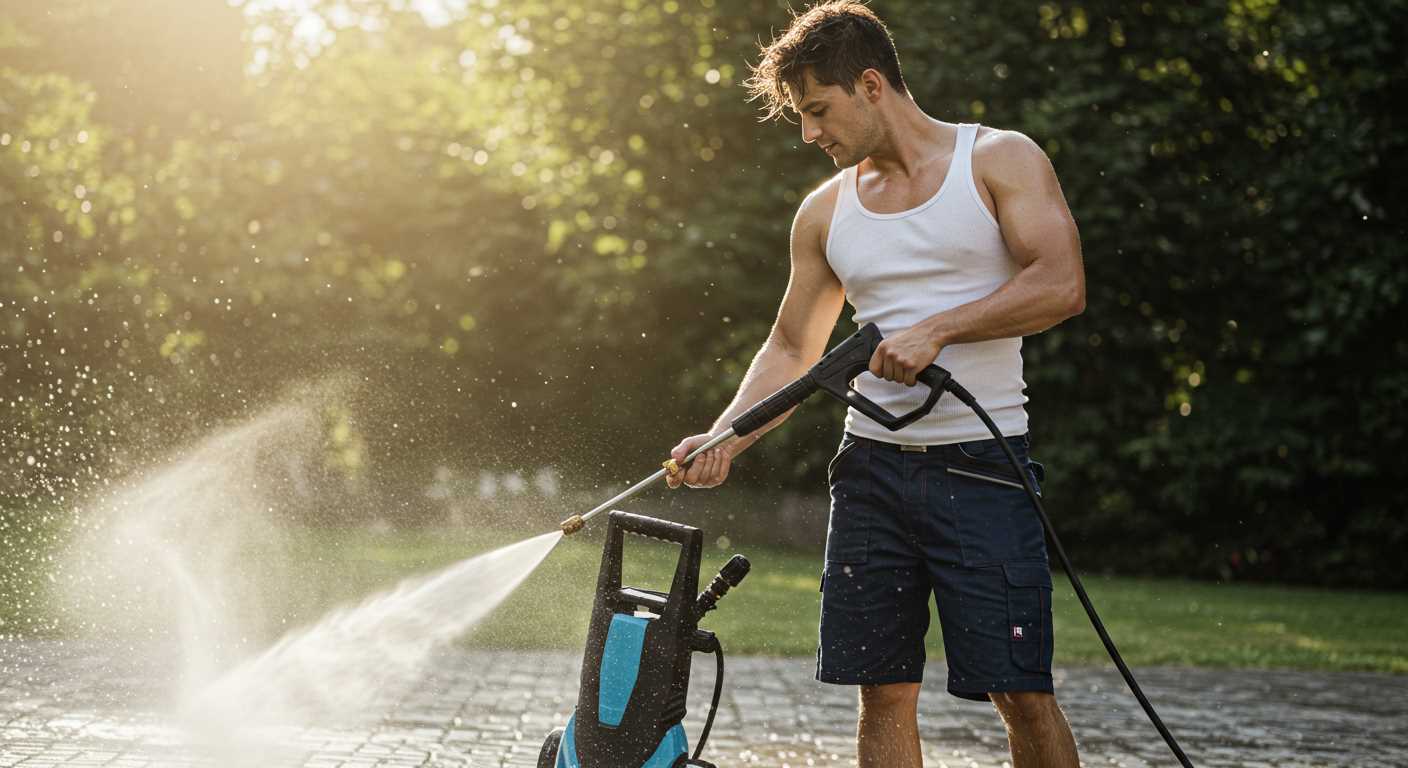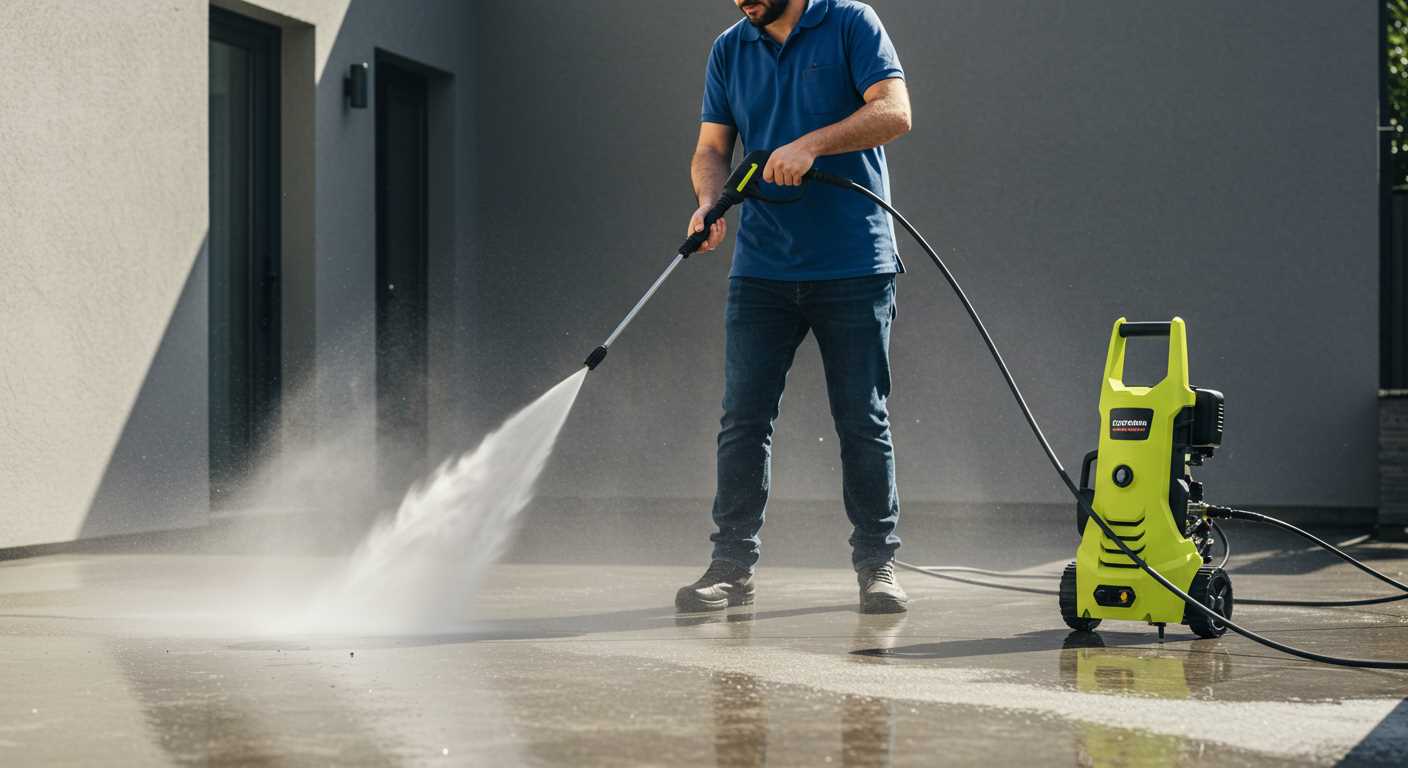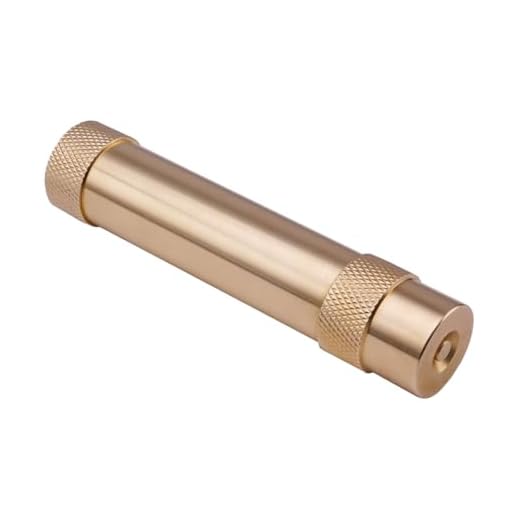



Before anything else, ensure your safety gear is on–gloves and eye protection are a must. These devices can eject water at incredible force, so keeping your distance during operation is crucial to prevent injury. Before beginning your task, identify the surface you’ll be cleaning. Adjust the nozzle to match the material–delicate surfaces like cars require a wider spray pattern, while concrete can handle a tighter jet for thorough cleaning.
Next, connect your garden hose to the inlet of the equipment. Ensure that the connection is secure, as any leaks can affect performance. Depending on the model, some may require you to prime the system before starting. Once ready, turn on the water supply, keeping the device’s nozzle off to avoid accidental spray, and switch the motor on. After a few seconds, you can pull the handle to engage the flow.
When operating the nozzle, maintain a steady rhythm to avoid streaks or damage. Start at a distance of about two feet from the surface and gradually move closer as you evaluate effectiveness. For stubborn stains, hold the nozzle perpendicular to the surface and target those areas until the debris begins to lift. Adjust your distance as necessary, always prioritising control and comfort while cleaning.
After completing your task, don’t forget to turn off the device and the water supply. Release any remaining pressure by squeezing the handle, then disconnect the hose. Finally, store your unit in a dry place, ensuring it’s ready for the next time you need it.
Using the Wand Effectively

Begin by ensuring the nozzle is secured properly to the wand. A loose attachment can lead to leaks or inefficient operation. Adjust the nozzle according to the task at hand, with wider spray patterns being suitable for delicate surfaces and narrower jets ideal for tougher grime. Experiment with distances: starting from a greater range helps you assess the impact before moving closer.
Safety Precautions
Always wear safety goggles and gloves. The force generated can cause materials to splatter, so it’s wise to protect your eyes and skin. Keep a firm grip on the handle, as the intensity can lead to unexpected movements. Be aware of your surroundings, ensuring no one stands within the line of fire. Checking for nearby electrical outlets or water sources is crucial; avoid getting cords or sockets wet.
Maneuvering Techniques
Move steadily and avoid lingering on one area to prevent surface damage. I recommend a sweeping motion, which not only ensures thorough cleaning but also reduces fatigue on your wrist. Rotate your body instead of just your arms for a more natural motion. If you encounter stubborn stains, pause and concentrate to apply more pressure, but be cautious not to cause harm.
Selecting the Right Nozzle for Your Task
For optimal results, matching the nozzle type to the task is essential. Each nozzle alters the spray pattern and pressure, affecting effectiveness. For general cleaning, a 25-degree nozzle is versatile, providing a balanced spray for surfaces like driveways and patios.
When tackling stubborn dirt or grime, consider a 15-degree nozzle. This narrow jet concentrates power on a specific spot, making it ideal for tougher stains on concrete or metal. However, keep a safe distance to prevent damage.
If your goal is to wash delicate surfaces, such as cars or windows, a 40-degree nozzle will serve you well. This wide spray is gentle enough to avoid scratches while still providing cleaning power.
Specialised nozzles are also available. A turbo nozzle, for example, rotates the spray to combine the intensity of a narrow jet with the coverage of a wider one, making it effective for heavy-duty tasks.
Always remember to adjust the distance from the surface when switching nozzles. Closer proximity increases cleaning intensity but may risk surface damage, while further away reduces pressure but broadens the cleaning area.
Understanding Pressure Settings and Their Impact

Setting the appropriate force on your cleaning device is critical for achieving optimal results. Higher pressures are effective for tough stains on surfaces like concrete, while lower settings work well for delicate surfaces such as wood or painted areas. Always start with the lower setting and gradually increase it if needed to avoid damage.
Pressure Levels and Applications
For light-duty tasks such as cleaning vehicles or outdoor furniture, a setting between 1100 and 1300 PSI is often sufficient. For medium-duty jobs, like removing mildew or dirt from decks and pavements, aiming for 1300 to 2300 PSI is advisable. Heavy-duty applications–such as stripping paint or deep-cleaning sidewalks–may require pressures of 2500 PSI and above.
Evaluating Results
After adjusting the pressure, evaluate the cleaning efficiency in a small hidden area before proceeding with the entire surface. If you notice damage or excessive wear, revert to a lower force. The right setting not only protects surfaces but also minimises the risk of water waste and damage to the environment.
Proper Grip and Stance While Using the Trigger Gun
Maintain a firm grip with your dominant hand around the handle, ensuring your fingers wrap securely around it for control. Your index finger should rest comfortably on the trigger, allowing quick activation while preventing accidental discharge.
Body Positioning
Stand with your feet shoulder-width apart to create a stable base, minimising the risk of losing balance due to recoil. Position yourself at an appropriate distance from the surface being cleaned, typically 2 to 3 feet, depending on the specific nozzle and applicator.
Keep your knees slightly bent and maintain a relaxed posture to enhance stability and reduce strain on your back. Avoid leaning forward excessively; instead, let your arms extend naturally while aiming at the target.
Safety and Control
Use your non-dominant hand to support the body of the machine, helping to stabilise it and allowing for controlled movements. This grip not only aids in maintaining aim but also assists in managing any sudden jolts from the equipment’s operation.
Shift your weight evenly between your feet as you move around, and always be aware of your surroundings to prevent slips or loss of balance. Make gradual, deliberate movements while adjusting the angle of the stream for effective cleaning without causing injury to yourself or damage to the surface.
| Grip Type | Description |
|---|---|
| Dominant Hand Grip | Secure around the handle with fingers wrapped firmly, finger ready on the trigger. |
| Non-Dominant Hand Support | Stabilises the body of the device, enhancing control during operation. |
| Stable Stance | Feet shoulder-width, knees bent, relaxed posture for optimal balance. |
Techniques for Achieving Optimal Cleaning Results
Approach surfaces at a consistent angle, ideally 25 to 45 degrees, to enhance the cleaning effect while preventing damage. Too steep an angle can lead to streaking, while a shallow approach may not adequately lift dirt.
Consistent Movement
Maintaining a steady pace is essential. Move the nozzle in a sweeping motion, overlapping each pass by about 50%. This ensures that no area is cleaned twice, saving time and maximising results.
Effective Pre-Treatment
For stubborn grime, apply a cleaning solution before starting. Allow it to sit for a few minutes to break down dirt. Afterward, rinse the area with a fan or wide-angle nozzle for a thorough clean.
Safety Precautions When Operating a Pressure Cleaning Device

Always wear protective gear, including safety goggles and sturdy footwear. The high-velocity stream can cause serious eye injury and slip hazards exist on wet surfaces.
Ensure that the area is free of people and pets before starting the machine. A safe distance should be maintained to prevent accidental injuries.
Regularly inspect hoses and connections for wear or potential leaks. Replacing any damaged components before use is critical to prevent accidents.
Check environmental conditions; avoid working in heavy winds as they can redirect water and debris. Also, refrain from using this equipment in electrical storm situations.
Beware of electrical outlets and power cords when in operation. Use a GFCI (Ground Fault Circuit Interrupter) outlet to minimise shock risks. Keep cords clear of water streams.
Follow the manufacturer’s recommendations for maintenance. A well-maintained machine significantly reduces risk during operation.
Never point the nozzle at yourself or others. This practice is vital to avoid unintentional injuries from the powerful spray.
Always maintain a firm grip and stable stance while operating. This control helps prevent losing command of the device, which can lead to accidents.
Before switching nozzles or making adjustments, turn off the equipment and allow it to depressurize. This step is fundamental to avoid accidental discharges.
Store the appliance and its accessories in a safe and dry location after each use. This habit prevents misplacement and accidental discharge during storage.
Maintenance Tips for Your Trigger Gun After Use
Always rinse the nozzle and couplings with clean water immediately after finishing your task to prevent residue build-up.
Disconnect the hose and remove any attachments to ensure all water drains. Store the components in a dry area to avoid corrosion.
Check the seals and O-rings regularly for wear and tear; replace them if necessary to maintain optimal performance.
Inspect the spray tip for blockages. If debris is found, use a soft brush or compressed air to clear the nozzle.
Lubricate moving parts lightly with machine oil to keep them functioning smoothly and to extend longevity.
Periodically, test the unit by running water through it without engaging the pump, ensuring everything functions correctly.
Keep the gun and its components in a protective case or covered environment to shield against dust and environmental damage.
Document any issues during your cleaning tasks; this helps track repairs and informs future maintenance.
FAQ:
What safety precautions should I take before using a pressure washer trigger gun?
Before using a pressure washer trigger gun, it is important to wear appropriate safety gear. This includes safety goggles to protect your eyes from debris, gloves to shield your hands, and closed-toe shoes to protect your feet. Check the pressure washer for any leaks or damages, ensuring that all connections are secure. It’s also advisable to monitor your surroundings for any people, pets, or objects that could get harmed during the cleaning process. Make sure to read the manufacturer’s instructions for any specific safety guidelines related to the model you’re using.
How do I properly connect the pressure washer trigger gun to the hose?
To connect the pressure washer trigger gun to the hose, first ensure that both the trigger gun and hose are completely dry and free of debris. Locate the quick-connect fitting on the end of the hose and align it with the corresponding connector on the trigger gun. Push the fitting into place until you hear a click, indicating it is securely locked. If your model has a safety lock, ensure it is disengaged before using the gun. Double-check the connection for security before turning on the water supply.
Can I adjust the pressure of the water coming from the trigger gun?
Yes, most pressure washer trigger guns come with adjustable settings. Look for a pressure adjustment knob or lever, usually located on the gun itself or on the pressure washer unit. By turning the knob or adjusting the lever, you can increase or decrease the water pressure based on your cleaning needs. For delicate surfaces like cars or windows, lower pressure settings are recommended, while tougher surfaces may require higher pressure. Always test a small area first to avoid damage.
What maintenance should I perform on my pressure washer trigger gun after use?
After using your pressure washer trigger gun, it’s important to perform basic maintenance to ensure its longevity. Begin by disconnecting the gun from the pressure washer and hose. Release any remaining pressure by pulling the trigger until the flow stops. Rinse the trigger gun with clean water to remove any soap or debris. Inspect the nozzle for clogs and clean it if necessary. Store the gun in a dry place, preferably away from extreme temperatures, to prevent damage and ensure it’s ready for the next use.
What common issues might I encounter while using a pressure washer trigger gun?
While using a pressure washer trigger gun, you may face a few common issues. One of the most frequent problems is a loss of pressure, which can occur due to clogged nozzles, air in the line, or hose leaks. Another issue could be water leaking from the trigger gun itself, often stemming from worn seals or connections. If you notice the gun not triggering properly, check for blockages or mechanical failures within the trigger mechanism. Always consult your pressure washer manual for troubleshooting tips specific to your model.







